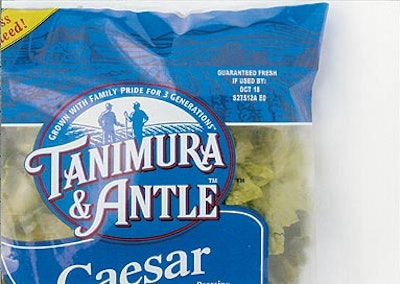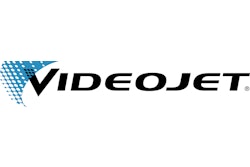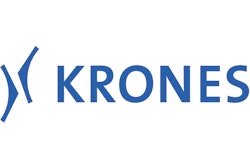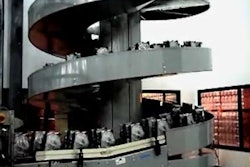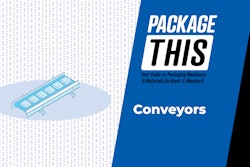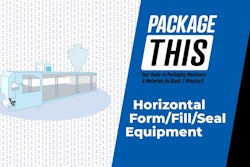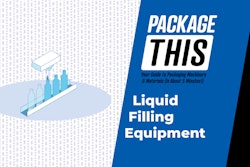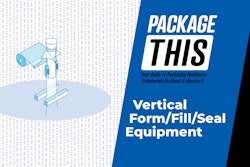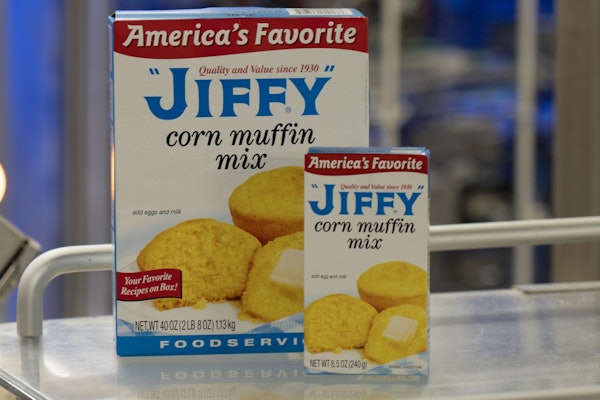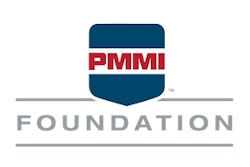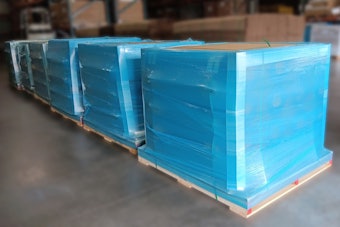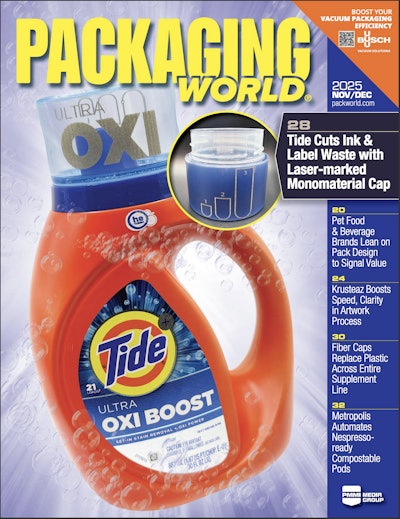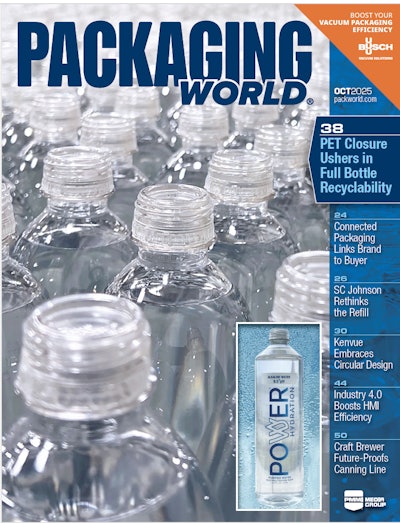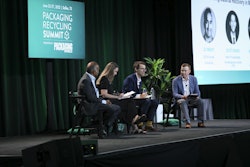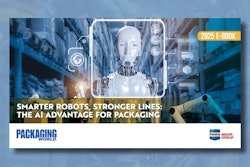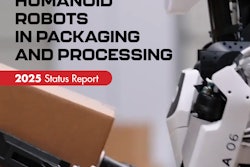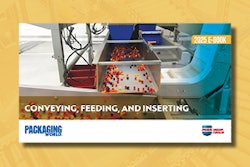At packaged goods manufacturers around the world, the packaging line’s contribution to supply chain efficiency is being scrutinized as never before. Many firms are asking two questions. First, how can packaging equipment on the plant floor be more tightly integrated, through controls and information technology, with the rest of the enterprise? Second, how can all stakeholders, including packaging line operators, gain better visibility into and across the entire supply chain?
One firm finding answers to both questions is Tanimura & Antle, a leading produce marketer based in Salinas, CA. As part of a recent $12 million investment in processing, packaging, and distribution of cut, washed, and bagged salad, T&A developed Plant Tracker, which links on-line date-coding equipment and bar-code reading equipment to a single central database. This system enables T&A to change product-specific date-code information on any of a dozen or so packaging lines by accessing the database through a centralized computer terminal. There an operator selects the code he requires from a series of preprogrammed options. His selection is transmitted by way of the plant’s Ethernet network to the appropriate coder. For salad bags the coding is done by a Videojet DataFlex™ thermal-transfer coder using Claricom software. For corrugated shippers, coding is done by an Intermec thermal-transfer print-and-apply labeler controlled by Teklynx software.
Every imprint made by a DataFlex coder represents one bag made, and that information is captured in the central database. Every case label applied is scanned by an Accu-Sort scanner, and this tally, too, enters the database as one case of product produced. Because the database can be accessed by any authorized person at their computer, everyone in the plant knows the real-time status of every packaging line.
According to Glenn Adler, process engineer at T&A, this data collection and reporting functionality is a huge boost to supply chain efficiency. Armed with this information, the people responsible for putting finished goods on trucks are much better equipped to keep their part of the T&A supply chain humming.
“They have trucks coming in at specific times,” says Adler. “Because they’re able to see the real-time status of our packaging lines, they can make sure the trucks arrive when they want them to. You just can’t do that if the only data you have is a paper trail.”
Because Plant Tracker counts bag imprints and cases scanned, it can deduce things like film waste. If the database says 23 bags were made but only one 20-count case was scanned, then T&A knows that three bags’ worth of film was wasted.
“Industry-wide, film waste in an operation like this typically runs in the eight to ten percent range,” says Adler. “We make 350ꯠ bags a day here on a slow day, and ten percent of that is 35ꯠ bags. And the film is not cheap.
“If the data in Plant Tracker tells us that one particular line has a lot of film waste, we can understand much more quickly what steps we need to take to keep film waste to a minimum. If the only data you have is on paper, then all you know is that you’re wasting 10% of your film. With this data, we’re shown where to focus, and we’re shown in real time.”
SABMiller’s portal
What T&A has added to its supply chain scheme is greater transparency across the entire enterprise. At SABMiller in Capetown, South Africa, Thinus van Schoor has a similar goal in mind.
“It’s still a work in progress, but we’re trying hard to bring greater visualization to the packaging side of our operations,” says van Schoor, automation manager at SABMiller. “Packaging lines tend to be very machine-focused as opposed to line-focused. Walk up to a machine’s HMI panel and typically all the graphical interfaces on that screen pertain only to that machine. That creates an environment that is machine-specific. We think the way to improve is to make that HMI panel a portal into a much broader range of processes. Why not give a packaging machinery operator access to order fulfillment information, or to batch and processing information? Then he can actually make a contribution to what’s happening up or downstream from the machine-mounted HMI panel he happens to be standing at. Instead of reacting to alarms when something goes wrong, he could be involved in doing something proactively to prevent that alarm from going off in the first place.”
Precisely this kind of visualization has been designed into a new glass bottling line now being installed at SABMiller. Operator interfaces at the machine level will give an operator access to machine conditions throughout most of the line. SABMiller worked closely with Krones, the
key OEM supplier, to give the new line its interconnectedness.
“With the exception of the rinsing, filling, and capping machines, every machine’s HMI will include a line overview showing machine states,” says van Schoor. “Working with Krones, we’re implementing the PackML State Model as the common interface among machines.” (Developed by the OMAC Packaging Workgroup, PackML is a collection of guidelines, specs, and terminology promoting standardization on how controls are implemented in packaging machines.)
Van Schoor believes the new line will be highly efficient from a supply chain perspective because changeover time will be kept to a minimum.
“A lot of our lines have a high SKU mix, so changeovers are common,” says van Schoor. “Being able to visualize the entire line and start it up that way, as opposed to getting individual machines running one by one and then fine-tuning the conveyor connections between them, we’ll be able to move back into production after a changeover much more quickly. This will enable us to do smaller lots effectively, which in turn brings huge supply chain benefits.”
Van Schorr is also convinced that true supply chain efficiencies are best gained through an enterprise-wide effort.
“You’d be amazed at how deeply divided batch thinking and packaging thinking can be,” says van Schorr. “As a brewer, we can’t affort to have a batch way of doing things and a packaging way.”
SABMiller already has an extensive standards program in its processing area that’s based on the U.S. standard ISA S88 for batch control systems. Now the firm wants to accomplish similar standardization in its packaging activities.
“That’s why we’re active in the OMAC Packaging Workgroup,” says van Schoor, a newly elected member of that group’s executive committee. “Let’s just make sure that what comes out of S88 can ‘talk’ to what comes out of OMAC. And while we’re at it, why shouldn’t both of those standards ‘talk’ to the ISA/S95 standards, which address the integration of business or enterprise systems with machine control at the plant level?”
Integration at TurtleWax
At TurtleWax Ltd. UK in Skelmersdale, England the recent implementation of a customized solution from Siemens integrates product development, packaging, distribution, and ERP. A paper outlining this work was presented last September at a forum jointly sponsored by IEE, ARC Advisory Group, and University of Cambridge Institute for Manufacturing. Presenting the paper were Chris Day, Turtle Wax Quality Manager, and Steve Ashton, business development manager at Siemens’s Information Technology Plant Solutions group. A Powerpoint version of the presentation is available at www.iee.org/OnComms/PN/controlauto/cpg 2003.cfm
According to Day, the goal “was to make information available electronically to people making decisions instead of having a paper-based system where people sign off in succession. Paper has a way of getting lost. This new process is still a sequential one. But Marketing, Manufacturing, Laboratory, Finance—all of them along the chain are sure to see each other’s comments. They can insert notes and so forth. It’s highly visible.”
The Siemens solution consists of two parts. The product development part is essentially a workflow system to manage the development process of new products and to help get the correct packaging specs into the ERP system. The other part is about printing and applying case labels, collecting data, and managing product out the door.
“What we discovered in the early stages of the project is that the two parts are linked,” says Siemens’s John Graydon. “Labels applied to cases have some of the same information that the primary package’s labels have, so it made sense to integrate the two together.” This was done with Siemens’s supply chain software called Clarif-i.
Not only are new-product development and case coding tightly integrated. The bar codes on the case labels are scanned, and that data is instantly fed by the Siemens software into the ERP system. Before, this data was recorded on a clipboard and fed into the ERP manually. Now, there’s an automated and real-time connection between ERP and the number of cases being produced on the plant floor.
Flowing in the opposite direction, from the ERP system to the plant floor, are production requirements. Target production data is downloaded from the ERP system by the Siemens software and displayed on a line-side PC monitor located near the Advanced Labeling Systems thermal-transfer print-and-apply pressure-sensitive labeler. Once production begins, color changes at this graphical interface tell operators when they are near their target. Green tells them to keep on cranking, yellow means they’re close to their target, and a red signal indicates they have exceeded their target.
Day says another big supply chain benefit is that when cases leaving the plant are destined for, say, Spain, the copy on the case label will be Spanish.
“Before the Siemens software was in place, when we sent bottles to Spain the primary packaging was in Spanish but the copy on the case was preprinted, and it was in English,” says Day. “Now, because the development of the print-and-apply case label is tightly integrated with the development of the primary label, the languages are the same on both.”
What about planning?
At Unilever, global automation and control manager Andrew McDonald also sees a need for enterprise-wide visibility, particularly for planning.
“My gut feel is that despite all the fancy software we all claim to have, most planning in most factories is done by people with spread sheets,” says McDonald. “That approach is neither collaborative enough nor properly standardized. One planner will have a different set of planning tools, based on his own spread sheets, than the next guy. We need a planning process that is more visible across the whole supply chain. That will require interaction between the plant floor and the ERP. The plant floor must be aligned with the business.”
McDonald sees a big shift on the horizon that will have manufacturers fulfilling to demand rather than manufacturing to stock. Sharing this view is Roddy Martin of AMR Research, an industry analyst who advises CPG companies on manufacturing best practice.
“Manufacturing metrics will need to focus more on keeping retailers satisfied than on manufacturing efficiency,” says Martin. “That’s why you’re already seeing more and more manufacturing operations fall under the jurisdiction of the firm’s head of supply chain as opposed to a VP of manufacturing.”
This will require much less inventory in the supply chain, says Martin, and that has significant implications for tomorrow’s packaging lines.
“In the past,” says Martin, “if a packaging line was inefficient and couldn’t be relied upon, the answer to keeping the supply chain full was to hold masses of inventory. But holding massive inventories is too expensive. Packaging lines now have to be more efficient than ever. It’s all about capturing data quickly, and in real time, so that a supply chain planner can make use of events as they happen.”
Enterprise-wide integration, better use of controls and information technology, and greater visibility across the entire supply chain will all help packaged goods manufacturers compete in the world Martin foresees. Perhaps Unilever’s McDonald sums it up best: “Fewer assets working harder.”
